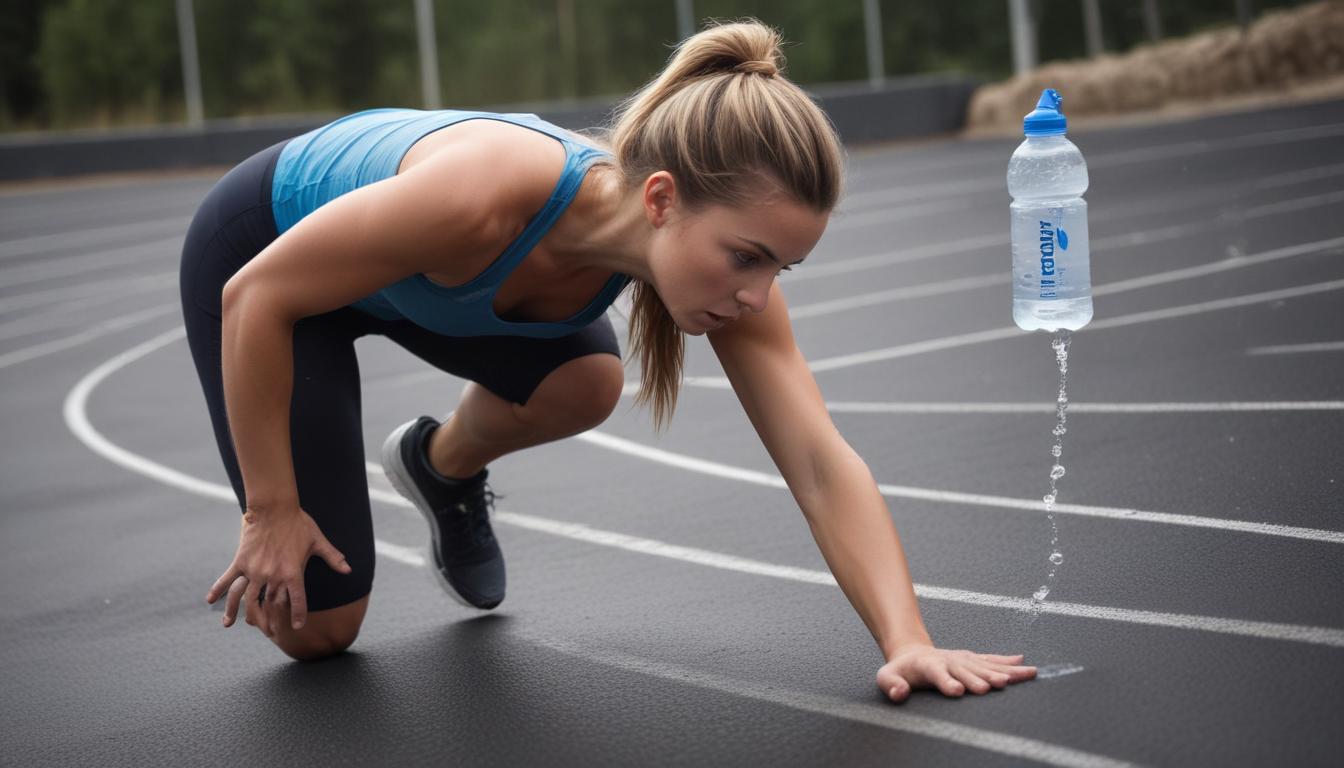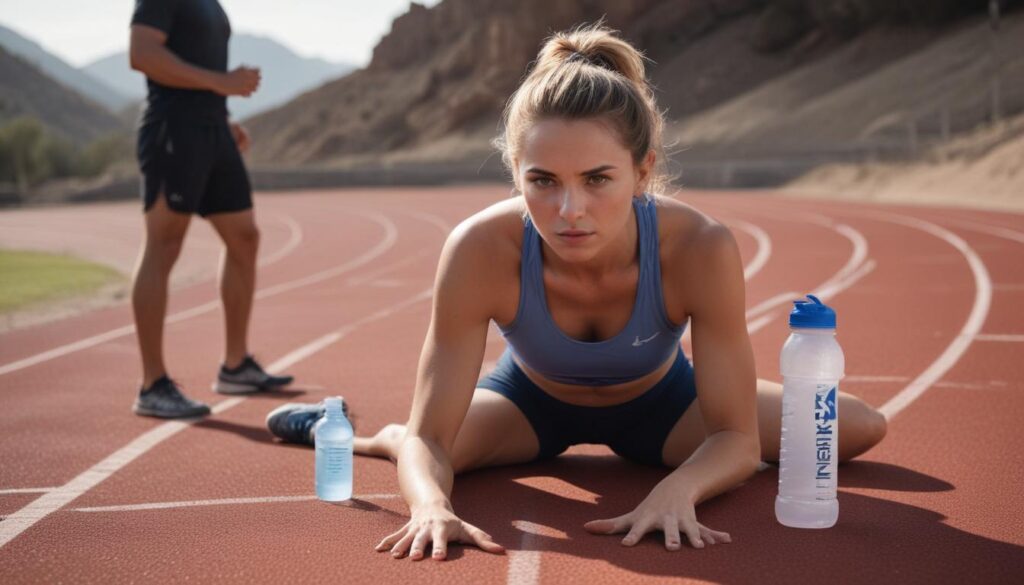Now Reading: Hydration for Peak Athlete Performance
- 01
Hydration for Peak Athlete Performance
Hydration for Peak Athlete Performance

The Ultimate Guide to Healthy Hydration for Athletes
You put in the hours at the gym, on the track, or on the field. You follow your training plan meticulously, you eat for performance, and you prioritize your sleep. Yet, sometimes you hit a wall. You feel that sudden drop in energy, your muscles start to cramp, and your focus wavers when it matters most. You’re drinking water, but it feels like it’s not enough. This frustrating performance plateau is often caused by a crucial, yet overlooked, element of athletic training strategic hydration.
The solution isn’t just to drink more water; it’s to drink smarter. Proper hydration is a science that balances fluid intake with electrolyte replacement to fuel your body, sharpen your mind, and unlock your true potential. This guide will walk you through everything you need to know to move beyond simple thirst-quenching and turn hydration into your secret weapon for peak performance and faster recovery.
Why Hydration Matters More Than You Think
Hydration is the foundation upon which all athletic performance is built. Your body is composed of about 60% water, and this water is vital for nearly every metabolic function. For an athlete, even a small drop in hydration levels can have a significant and immediate negative impact. When you lose as little as 2% of your body weight through sweat, your aerobic performance can decline sharply. This means you get tired faster, your heart has to work harder to pump blood, and the delivery of oxygen and nutrients to your working muscles becomes less efficient.
Beyond pure physical output, dehydration directly affects your cognitive function and safety. Your brain requires optimal hydration to maintain focus, reaction time, and decision-making skills—all critical components of competitive sports. Furthermore, dehydration is a leading cause of muscle cramps, fatigue, and more serious conditions like heat exhaustion or heat stroke. Viewing hydration not just as a performance enhancer but as a critical safety measure protects your body and allows you to train consistently and effectively.
Beyond Water The Role of Electrolytes
While water is essential, it’s only half of the hydration equation, especially for athletes. When you sweat, you don’t just lose water; you also lose critical minerals known as electrolytes. The most important of these are sodium, potassium, magnesium, and calcium. These electrolytes are like the body’s spark plugs—they are responsible for transmitting nerve signals, enabling muscle contractions, and maintaining the proper fluid balance both inside and outside your cells.
Simply chugging plain water during or after intense, prolonged exercise can be counterproductive and even dangerous. If you only replace the water you lose without replacing the sodium, you can dilute the sodium levels in your blood, a serious condition called hyponatremia. This is why sports drinks and electrolyte supplements exist. For any activity lasting longer than 60-90 minutes, or for shorter workouts in extreme heat, incorporating an electrolyte source is crucial to maintain nerve and muscle function and to help your body absorb and retain the water you are drinking.

Your Game Day Hydration Plan
A successful hydration strategy doesn’t start at the opening whistle; it begins long before and continues well after the event is over. By planning your fluid intake around your activity, you can ensure your body is primed for performance and ready for recovery.
Before the Event
Your goal before any competition or intense training session is to begin in a state of optimal hydration. This process starts 24-48 hours in advance by consistently sipping water throughout the day. Avoid chugging large amounts of water right before you start, as this can lead to stomach discomfort and will likely just be flushed out by your kidneys. A good rule of thumb is to drink about 16-20 ounces of fluid two to three hours before the event, giving your body time to absorb it. Then, top off your tank with another 8-10 ounces about 20 minutes before you begin. If you are a heavy or salty sweater, or if the event will be long, consider making this pre-event fluid an electrolyte drink.
During the Event
During the activity itself, your objective shifts from pre-loading to maintenance. The goal is to drink at a rate that closely matches your sweat rate to prevent a significant fluid deficit. Don’t wait until you feel thirsty, as thirst is a delayed signal that you are already dehydrated. Instead, aim to drink small, consistent amounts throughout the event. A general guideline for most athletes is to consume 7-10 ounces of fluid every 15-20 minutes. For activities lasting over an hour, this fluid should contain both electrolytes to replace what you’re losing in sweat and some carbohydrates to provide a steady source of energy for your muscles.
After the Event
Post-exercise rehydration is perhaps the most critical phase for jump-starting your recovery. Replenishing lost fluids and electrolytes helps restore normal muscle function, reduces soreness, and prepares your body for the next training session. A simple and effective way to gauge your fluid loss is to weigh yourself before and after your workout. For every pound of body weight you have lost, you should aim to drink 16-24 ounces of fluid to fully rehydrate. Your recovery drink should contain electrolytes, particularly sodium, to help your body hold onto the fluid. A balanced meal containing salty foods and plenty of fluids can also be an excellent way to rehydrate and refuel.
How to Know If You Are Dehydrated
Learning to recognize the early signs of dehydration is a skill every athlete should master. Thirst is the most obvious sign, but it’s not the first. By the time your brain signals that you are thirsty, your performance may already be compromised. Other early warning signs include a dry or sticky mouth, feelings of fatigue or sluggishness, headache, and dizziness. Paying close attention to these signals allows you to intervene early by increasing your fluid intake before the effects become more severe.
One of the easiest and most reliable ways to monitor your hydration status on a daily basis is the simple urine test. Your urine color can tell you a lot about how hydrated you are. If your urine is a pale, lemonade-like yellow, you are likely well-hydrated. If it is dark yellow, has a strong odor, or looks like apple juice, it is a clear indication that you are dehydrated and need to drink more fluids immediately. Making a habit of checking your urine color first thing in the morning can help you start your day with a clear hydration goal.
Hydration Is a Habit Not a Task
Ultimately, optimal hydration is not something you only think about on game day; it’s an integral part of your everyday training lifestyle, just like nutrition and sleep. Consistently staying on top of your fluid intake ensures that your body is always ready to perform, recover, and adapt. Treating hydration as a constant habit rather than a pre-game task will yield massive benefits in your energy levels, endurance, and overall health.
To build this powerful habit, start with simple, actionable steps. Carry a reusable water bottle with you everywhere you go as a constant visual reminder. Set timers on your phone or use a smart water bottle to prompt you to drink throughout the day. If you find plain water boring, infuse it with fruits like lemon, berries, or cucumber to add natural flavor. By making hydration a seamless part of your daily routine, you are making one of the most effective investments you can in your athletic career.


































